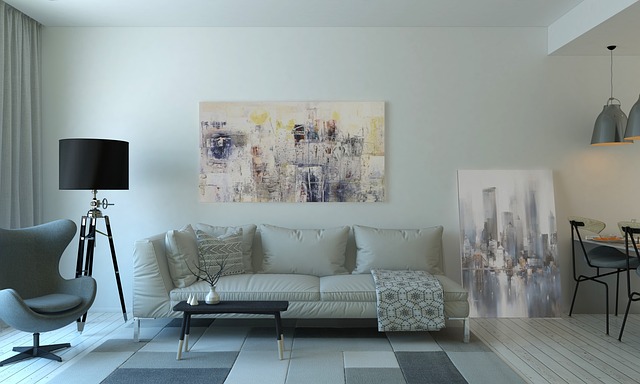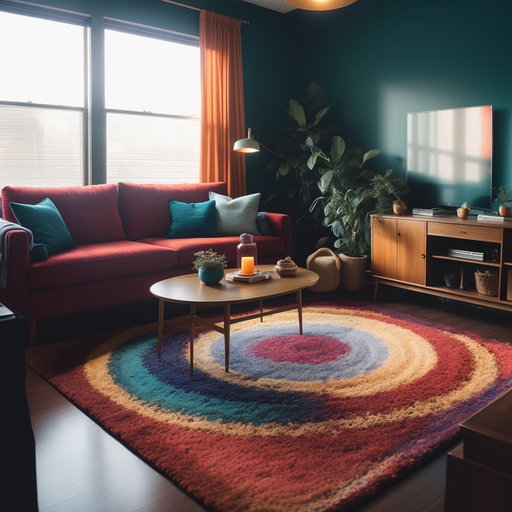Are you fond of Interior Design? Do you get into an empty room and just immediately start to look around, identifying the sources of natural light, and dimensions of the room, and thinking about the best way to place a stunning accent chair to steal all views? Then maybe you are one budding Interior Designer. Let’s have a nice chat about it.

Interior design as a career is a field that involves creating and renovating spaces for various purposes and clients. As in any vocation, qualifications, skills, and experience are part of a desired profile. Let’s start with the academic requirements:
What are the Education Requirements to be an Interior Designer?
In the United States, you can pursue your career as Interior Designer at several universities, such as Florida University, the University of Texas, or the University of Washington, just to name a few. Nevertheless, an academic profile in Interior Design can be obtained through several paths:
- An academic degree in Interior Design, Architecture, or a related field. This can be an associate’s degree or a bachelor’s degree, depending on the level of education and the type of job desired.
- To obtain an NCIDQ certificate that validates your skills, experience, and studies in Interior Design. It can be obtained by testing the NCIDQ exam.
- Taking additional courses or certifications in specialized areas of design, such as universal design or sustainability, to enhance skills and career prospects.
Licensing and Certification of an Interior Designer
The NCIDQ certificate is a professional credential that demonstrates the competence and credibility of interior designers in North America. The process to obtain the NCIDQ certificate involves the following steps:
Meet the education and work experience requirements for eligibility. These vary depending on the level and type of interior design degree or related degree obtained. Generally, candidates need a minimum of a bachelor’s degree in interior design or architecture and two years of work experience under the supervision of a licensed or certified interior designer or architect.
Apply for the NCIDQ exam through the Council for Interior Design Qualification (CIDQ) website. Candidates need to create an account, submit official transcripts, upload work verification forms, and pay an application fee. Applications are reviewed and approved by CIDQ.
Register for and take the three sections of the NCIDQ exam: Interior Design Fundamentals Exam (IDFX), Interior Design Professional Exam (IDPX), and Practicum Exam (PRAC). Candidates can take the exam sections in any order they prefer, but they must pass all three sections within a five-year period. The exam fees vary depending on the number and type of exam sections.
Receive the NCIDQ certificate upon passing all three exam sections. Candidates can use the NCIDQ credential to market their services, apply for licensure in regulated jurisdictions, and join professional associations such as ASID or IIDA.
Are There Any Benefits Getting the NCIDQ Credential?
Certifications may retribute the professional with some advantages to enhance their profile.
Some of the benefits of getting the NCIDQ credentials are:
- It enhances your knowledge of the core competencies of interior design, such as codes, standards, health, safety, and welfare.
- It displays your commitment to the profession and to lifelong learning, as you need to maintain your certification through continuing education.
- It increases your earning potential, as certified interior designers tend to earn more than non-certified ones.
- It helps with legislation and design rights, as it meets the legal and regulatory requirements for interior design in many states and provinces.
- It elevates the profession and helps to protect the public, as it ensures that interior designers have the necessary qualifications to practice safely and effectively.
- It opens up job opportunities and career advancement, as many employers prefer or require NCIDQ certification for hiring or promotion
There is some formal research on the subject of NCIDQ certification and its benefits. For example, a study by Caren S. Martin and Denise A. Guerin found that NCIDQ certification has a positive impact on interior designers’ self-efficacy, professional identity, and career satisfaction.
Developing a Diverse Skill Set
The Interior Designer: An Artist Or A Technical?
Mastering technical and artistic skills is essential for success in interior design, as it allows you to create functional and beautiful spaces that meet the needs and preferences of your clients.
Technical skills involve the use of specialized tools, methods, or knowledge to perform a specific task or achieve a certain goal. They are often measurable, quantifiable, and rule-based. Examples of technical skills for interior design are sketching, design software, architecture, and design ratios.
Artistic skills are skills that involve the use of creativity, imagination, or intuition to express oneself or create something original and unique. They are often subjective, qualitative, and flexible. Examples of artistic skills for interior design are color theory, textiles, product knowledge, and spatial awareness.
Now, picking or designing furniture is meant to be a balanced task! Let’s take for example the Togo Sofa, a marvelous piece of mid-century modern aesthetic that had to be expertly designed with care and technical skills
Is it relevant to specialize in Interior Design?
These are some of the essential skills that aspiring designers should focus on to succeed in interior design. Developing your essential skills is the guarantee of excellent performance.
Space planning. This is the ability to create functional and efficient layouts for different spaces, such as rooms, offices, or buildings. Space planning involves considering the size, shape, and purpose of the space, as well as the needs and preferences of the users.
Color theory. This is the understanding of how colors affect mood, perception, and behavior. Color theory involves knowing how to use color schemes, contrast, harmony, and balance to create appealing and appropriate environments.
CAD software. This is the use of computer-aided design (CAD) or computer-aided design and drafting (CADD) software to create and modify digital models and drawings of interior spaces. CAD software allows designers to visualize, test, and present their ideas in a realistic and accurate way.
Project management. This is the ability to plan, organize, and execute interior design projects from start to finish. Project management involves setting goals and budgets, coordinating with clients and contractors, managing timelines and resources, and solving problems that may arise during the process.
Communication. This is the ability to communicate effectively with different audiences and stakeholders, such as clients, colleagues, suppliers, and media. Communication involves listening, speaking, writing, and presenting skills, as well as the use of appropriate language, tone, and style.
Education Can Do A Lot for an Interior Designer
Education and training may improve the skills and enhance the profile of an interior designer.
Taking interior design classes can help you gain a specialized academic certification in interior design, which can highlight your skills and differentiate you from other candidates.
Applying for internships, entry-level positions, or freelance work can help you gain hands-on experience in different settings and sectors of interior design, such as residential, commercial, health care, education, retail, hospitality, or restaurant design.
Pursuing voluntary certification from organizations such as the National Kitchen & Bath Association (NKBA) or the National Council for Interior Design Qualification (NCIDQ) can help you demonstrate your knowledge and skills in specialized areas of interior design and increase your credibility and career opportunities.
Interior Designers get Their Hands Dirty, Too
Gaining Hands-On Experience is a must for every job, and certainly, it can do a lot for an Interior Designer. To start somehow is key, and there are several ways to do it.
Internships are an opportunity to network with great people and sharpen your skills before entering the workforce. They also help you figure out your true passion and expose you to different settings and sectors of interior design.
Entry-level positions are a way to show your commitment to professionalism, self-improvement, and excellence. They also help you build your resume and portfolio with industry experience that employers prefer to hire.
Freelance work is a way to showcase your creativity, flexibility, and independence. It also helps you build your reputation and client base by delivering quality work that meets their expectations.
Interior Design: A Continuous Path Of Learning
Continuous learning and professional development can help interior designers attract and retain clients by demonstrating their expertise, credibility, and value in the market, keeping up with the changing trends, technologies, and regulations in the interior design industry, and enhancing their skills and knowledge.
Continuous learning and professional development can help interior designers meet the professional development requirements of their provincial associations and maintain their membership status.
Continuous learning and professional development can help interior designers advance their careers by expanding their network, portfolio, and opportunities for specialization and certification.




